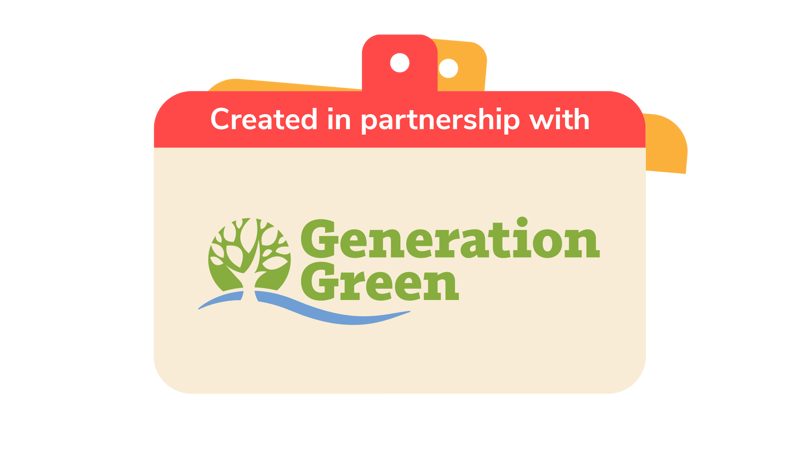
Community impact: the movie
You’ll need
- Access to a computer
- Camera or phone
- A4 paper
- Pens or pencils
- Photos, videos, and resources from your community impact project
- Microphone (optional)
- Tripod (optional)
- Projector
Before you begin
- Early in your project planning, before the project begins, talk about how you’d like to record it. You’ll need to think about taking pictures and videos as soon as it all starts, so it’s good to know what you’re aiming to create and what type of pictures and videos you’ll need to capture.
- Get in touch with your local Media Development Manager for advice about promoting your project and movie.
- This activity might take more than one session – you may want to split the planning, filming, and editing over more than one meeting, depending on your group and the complexity of the films they’ll make.
- If you can’t get hold of a projector you could just use a laptop.
Safety checklist
Use the safety checklist to help you plan and risk assess your activity. Additional coronavirus-related controls to think about may include:
- Set up a hand washing station that you can use throughout the session.
- Make sure people wash their hands before and after using any shared equipment or resources.
- Clean any equipment between different people using it.
- Remind everyone to stay a safe distance apart at all times.
Make a storyboard
- Everyone to talk about what they did during their community impact project and what they’d like to include in the movie. People may want to look at photos and videos made during the project to help refresh their
- Split into groups of between five and seven people. The person leading the game should give each group pens and paper, in case they want to jot anything down.
- Each group should come up with a creative plan for a movie that’s between one and three minutes long. They can make any kind of film they’d like, for example, include a sketch, a vlog or a talk show.
- The person leading the activity should remind everyone that they can bring in items to use when they film (probably next time they meet).
Action
- Everyone should get back into their groups and spend time finishing off their final plan. They should make sure everyone agrees with the plan and knows what they’re doing!
- The person leading the activity should give each group the equipment they need to make their movie.
- Each group should work together to film their movie.
- When all the groups are ready, everyone should together and watch all of the movies using the projector.
- Once everyone is happy with the final films, the person leading the activity should share the movie with people involved in the community impact project. They could even upload them to the local Scout social media channels.
Reflection
This activity challenged everyone to celebrate and share what they did for their community impact project. It also helped them to think back and consider what they learned during the project. How did their communication, teamwork, creativity, organisation and leadership skills develop?
Making a movie about the project also tested people’s creative skills and helped them remember their achievements. Why do people think videos are a good way to tell the world about something? Are there other ways they could’ve shared their project to encourage other people to take action?
The project took place over a long period of time because it’s important to make sustained change in the community. Why is it rewarding to help others? Have people got plans to continue the project or perhaps start a new one? Everyone should feel proud about completing their project and making a positive impact where they live.
Safety
All activities must be safely managed. You must complete a thorough risk assessment and take appropriate steps to reduce risk. Use the safety checklist to help you plan and risk assess your activity. Always get approval for the activity, and have suitable supervision and an InTouch process.
- Online safety
Supervise young people when they’re online and give them advice about staying safe. Take a look at our online safety or bullying guidance. The NSPCC offers more advice and guidance, too. If you want to know more about specific social networks and games, Childnet has information and safety tips for apps. You can also report anything that’s worried you online to the Child Exploitation and Online Protection Command. As always, if you’ve got concerns about a young person’s welfare, including their online experiences, follow the Yellow Card to make a report.
- Phones and cameras
Make sure parents and carers are aware and have given consent for photography.
- To make this activity easier, you could decide what kind of films the groups should make, rather than giving them a free rein. A helper could film and edit the movies.
- People (or groups) could take on roles such as actors, interviewees, camera people, and editors.
- If anyone’s got the right skills and equipment, people could use special editing techniques, include voiceovers, on-screen text and animation.
- If anyone doesn’t want to be in a film, that’s OK. There are plenty of roles behind the camera, for example, filming, editing, or directing. Groups could make movies that don’t have anyone in, for example, using voiceovers or captions. Alternatively, people could also draw pictures or write a short article or message about their project.
- Use camera tripods or holders to help keep the cameras steady.
All Scout activities should be inclusive and accessible.
With permission from everyone involved in the movies, you could contact local media to ask if they’d consider sharing the videos on their website or social media channels. Challenge your viewers and followers to help the charity or cause you supported during your community impact project. What will you ask them to do?
Young people can choose the roles they’d like to take in their movies.


